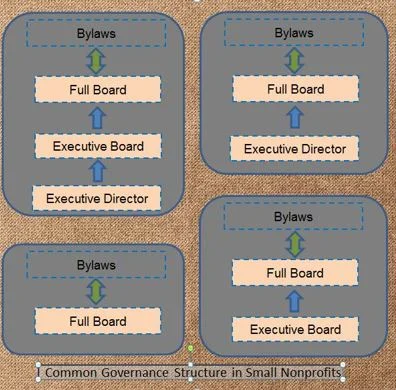THE YEAR-END FINANCIAL STATEMENT PROCESS:
A Practical Guide for Small Nonprofit Organizations having a CPA Audit (or Review)
(Part 3 of 5)
Part III: Deliverables and Outputs of the Audit Process
A. Financial Statements and Audit Report
At the end of the engagement, the auditor will present the organization’s financial statements and footnote disclosures into a generally accepted format. The financial statements will be preceded by the Auditors Report. This report will state whether the financial statements are “presented fairly, in all material respects.” It is this “assurance” that enables the users of the financial statements to rely on them. Almost every audit will have an “unqualified opinion”, which is the best outcome. The reason for this is that any adjustments the auditor “proposes” will most likely be accepted and posted by the organization. A “qualified” opinion would be an “except for” opinion. It means the auditor agrees with the financial statements except for a particular item. The last opinion is an “adverse” opinion. That would mean the auditor is stating the financial statements are “not presented fairly”.
B. Auditor Communications
Besides the Auditor’s Report on the financial statements, there are other items the auditor will report to the organization. These auditor communications can be broken into three areas: (1) required communications to governance; (2) a report on internal control deficiencies; and (3) recommendations for strengthening internal controls and operating efficiency. The ways auditors communicate these items to the organization varies.
(1) Required Communications to Governance: This is usually in letter form and will highlight to governance key aspects of the audit and the financial statements. This will include complex accounting policies, significant estimates, important disclosures (footnotes), difficulties encountered in performing the audit, and disagreements with management. Also, there would be information about uncorrected and corrected misstatements. Corrected misstatements would be the adjustment entries that were proposed and accepted. There would normally not be any material uncorrected misstatements in a small nonprofit audit.
(2) Internal control deficiencies: Although it is not the purpose of the audit to render an opinion on internal controls, the auditor is required to report any significant deficiencies in internal control encountered during the audit.
Generally Accepted Auditing Standards advise that a deficiency in internal control exists when the design or operation of a control does not allow management or employees, in the normal course of performing their assigned functions, to prevent, or detect and correct, misstatements on a timely basis. A material weakness is a deficiency or a combination of deficiencies in internal control, such that there is a reasonable possibility that a material misstatement of the organization’s financial statements will not be prevented, or detected and corrected, on a timely basis.
Since almost all organizations receive an unqualified opinion on the financial statement audit report, the internal control communication letter could be the most important output of the audit. It is common for a small nonprofit audit to result in some significant deficiency findings. Correcting internal control deficiencies is critically important to the financial health of all nonprofit organizations. Weaknesses in internal control can impact financial reporting or entice someone to perpetrate fraud. Common deficiency findings in nonprofit audits involve segregation of duties, oversight of financial reporting, monthly reconciliation and closing procedures, controls over cash and governance issues. The items identified in the internal control letter should be reviewed and addressed by the board and management. Many organizations develop a written response and action plan for each item.
(3) Recommendations: During the audit process the auditor may become aware of opportunities for strengthening controls and operating efficiency. These may be internal control items not deemed material enough to be included in the internal control letter. These also may be items involving issues that are not directly related to the audit such as Form 990, payroll filings, other general business items. If not addressed, items on the recommendation letter may escalate to deficiencies in future periods. The “recommendations” should be reviewed and addressed by the board and management, as well. These recommendation items are not required by auditing standards and can be communicated orally during the course of the audit.
Although written communication letters are addressed to the organization, they are often requested by outside parties, such as funders. Also, certain states require any communication letters prepared by the auditor to be submitted with the annual filing. If the organization changes auditors, a potential subsequent auditor may ask to see the communication letters, as well.

